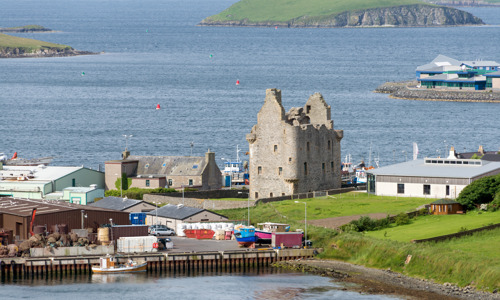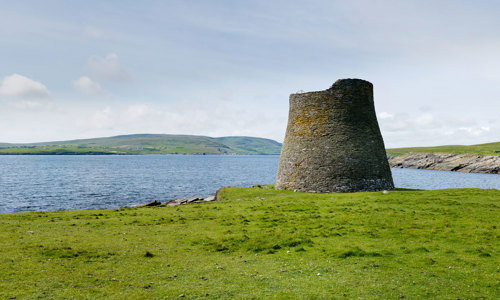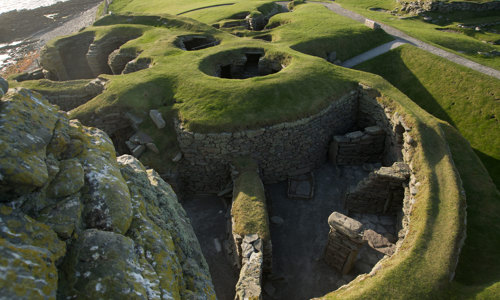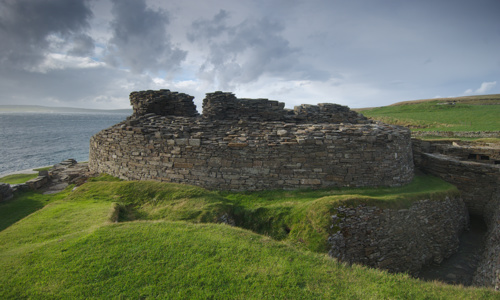History
The enigmatic and unique Stanydale ‘Temple’ was built between 4,000 and 5,000 years ago.
It comprises a wall of large stone boulders, some weighing up to 300kg, forming an oval enclosure measuring 14m by 10m.
The design of Stanydale ‘Temple’, is very similar to Neolithic houses and burial cairns in Shetland, but it is twice the size. There are alcoves or cells in the wall spaces, like the bed recesses in prehistoric houses, but larger.
Post-holes in the interior indicate the ‘temple’ may once have had a grand timber roof. Carbonised remains of timber in one of the post-holes reveal the roof was likely made of North American spruce, which would have arrived in Shetland as driftwood – an important building material for Atlantic coastal prehistoric communities.
The monument’s concave façade is almost horned, in a manner similar to nearby chambered cairns. Its entrance passage suggests there may once have been heavy timber doors.
An enigma
Archaeologist Charles Calder, who excavated at Stanydale in 1949, classified the monument as a ‘temple’ due to its similarity to the Neolithic temples of Malta. This link has now been dismissed, though it’s likely Stanydale did have some ritual use.
A polished stone ‘Shetland knife’ and a pile of burnt sheep bones were found at Stanydale, which have been interpreted as ritual objects.
The monument is far too large to have been a house, even for a high-status individual. No domestic rubbish was found at the site.
Other theories for Stanydale’s purpose include:
- a chieftan’s residence
- a tribal assembly hall
A Neolithic landscape
Stanydale ‘Temple’ is reached by a short hike from the small car park, past stone burial cairns and piles of stones marking sites of ancient houses.
Like the ‘temple’, these sites consisted of a large main oval room with alcoves and cells set into the side walls. The entrance was at one end, flanked by a stone porch forming a windbreak. They date from 3000 BC to 500 BC.













